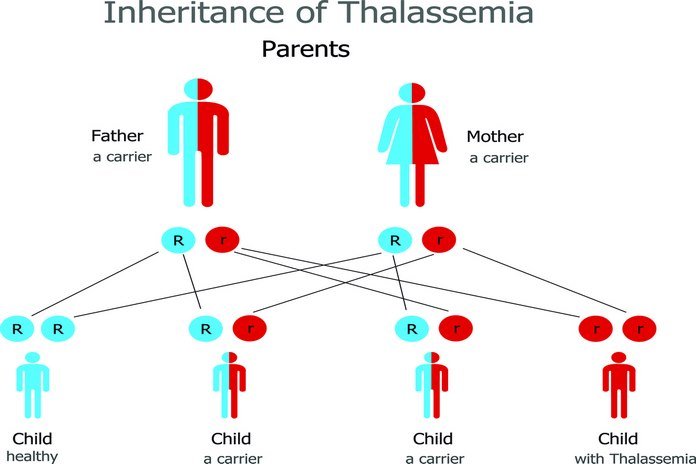Thalassemia
Thalassemia can exist in two primary forms or categories:
Thalassemia minor: it is the mild or less severe form of this disease. And the patients with this kind of disorder can survive. If only one parent has thalassemia, then their children may have thalassemia minor.
Thalassemia major: it is the severe or very serious form of these diseases. And the patients with this disorder are not likely to survive for an extended period. If both parents have thalassemia, then their children may have thalassemia major.
The most common symptoms of thalassemia are bone deformities, dark colour urine, yellow or pale skin, fatigue, exercise tiredness, and cannot grow properly.
To make a diagnosis, the doctor takes some blood samples and sends these samples to a lab to check the abnormal haemoglobin.
There is no problem treatment of thalassemia, but the affected patients require regular changing of blood.

